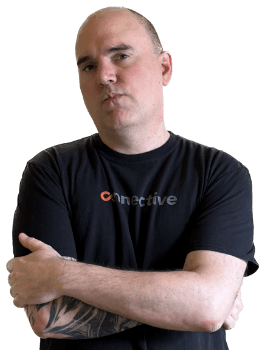Want to know something that makes me crazy? Most people working hourly have no idea how to calculate their rate properly.
They pick a number that “sounds right.” Maybe check what others charge. Add a little padding for confidence.
Stop it.
I’ve watched this pattern destroy careers. Smart, talented people charging half what they need to survive. Others burning out because they forgot to factor in the reality of hourly work.
Here’s the thing: Your hourly rate isn’t about what you think you’re worth. It’s about math. Cold, hard math that most people completely ignore.
The expensive mistakes everyone makes
After years of watching people struggle with pricing, the same mistakes show up over and over.
Mistake 1: forgetting you’re not billing 40 hours a week
This one kills me every time.
You think: “I need to make $100K, there are 2,080 work hours in a year, so I’ll charge $48/hour.”
Wrong. So wrong.
Nobody bills 40 hours a week. Nobody.
Between client meetings, admin work, business development, and just regular life, you’re lucky to bill 20-25 hours. And that’s if you’re really efficient.
I’ve tracked this across hundreds of freelancers and consultants. The average? About 60% billable time for established professionals. Newbies? Closer to 40%.
Mistake 2: ignoring the hidden costs of being hourly
When you work hourly, you’re not just missing a steady paycheck. You’re missing everything that comes with it.
Health insurance. Retirement contributions. Paid time off. Equipment. Software. Professional development. Taxes. Oh god, the taxes.
Most people forget self-employment tax alone will eat 15.3% of everything you make. That’s on top of regular income tax.
Then there’s the stuff nobody talks about. The unpaid time spent on proposals. The hours educating potential clients. The mental overhead of constantly hunting for the next gig.
Mistake 3: pricing for today instead of tomorrow
Here’s what really separates the pros from the people who burn out: thinking ahead.
Your rate needs to cover more than this month’s bills. It needs to fund your slow seasons. Your professional growth. Your eventual exit strategy.
Most people price for survival. The ones who last price for sustainability.

The framework that actually works
Forget the guessing games. Here’s how to calculate an hourly rate that won’t leave you broke or burnt out.
Step 1: figure out what you actually need (not want)
Start with your real numbers. Not your aspirational lifestyle. Your actual costs.
Pull up your bank statements. Add up:
- Monthly living expenses (rent, food, transportation)
- Business costs (software, equipment, insurance)
- Taxes (set aside 30-40% minimum)
- Emergency fund (because clients ghost and projects end)
- Future you (retirement, time off, professional development)
Most people lowball this number. Don’t. Be honest about what it costs to run your life and business.
Step 2: calculate your real working hours
This is where the math gets uncomfortable.
Take your theoretical 2,080 work hours per year. Now subtract:
- Vacation and sick days (be realistic)
- Admin and business development time
- Professional development and training
- Time between projects (it always happens)
For most hourly workers, you’re looking at 1,000-1,400 billable hours per year. That’s it.
Step 3: do the actual math (with buffer)
Here’s the formula:
(Annual costs + profit margin) ÷ Billable hours = Base hourly rate
But here’s the thing. That base rate? It’s your floor, not your ceiling.
Add 20-30% buffer. Trust me on this. Projects run over. Scope creeps. Clients negotiate. You need room to breathe.
Step 4: the market reality check
Now you’ve got a number. But will anyone pay it?
Research what others with your skillset charge. Not just anyone. People getting consistent work at good rates.
If your calculated rate is way above market, you’ve got three options:
- Cut costs (painful but sometimes necessary)
- Increase billable hours (careful not to burn out)
- Level up your skills to justify the rate
If it’s below market? You’re leaving money on the table. Raise it.

Let me show you how this actually works
Numbers make more sense when you see them in action. So let’s run through a real calculation.
Say you’re a freelance marketer who wants to make $120,000 a year. Here’s how it breaks down:
Living expenses: $120,000 Business costs (software, equipment): $10,000
Taxes (self-employment + income): $40,000 Emergency fund + slow periods: $15,000 Retirement/savings: $15,000
Total needed: $200,000
Now the hours. You start with 2,080 work hours. Subtract:
- 3 weeks vacation/sick time: 120 hours
- Admin/business development (30%): 588 hours
- Time between projects: 172 hours
Real billable hours: 1,200
The math: $200,000 ÷ 1,200 = $167/hour
Add 25% buffer for scope creep and negotiation: $209/hour
That’s your real rate. Not the $60/hour you were thinking about charging.
See the difference?
The 2025 market reality
Let me tell you what’s different now compared to even a few years ago.
Remote work exploded the talent pool. You’re not just competing locally anymore. But you’re also not limited to local rates.
AI is eating the bottom of the market. Basic tasks that used to bill at $25-50/hour? Automated or outsourced. The middle is disappearing fast.
But here’s what’s also true: Clients who understand value are paying more than ever for real expertise. For people who solve problems, not just complete tasks.
The hourly workers thriving right now? They’re positioning themselves as specialists, not generalists. They’re selling outcomes, not time.
The mindset shift that changes everything
Here’s something most rate calculators won’t tell you: The number matters less than how you think about it.
Stop seeing your rate as what you “charge.” Start seeing it as what you “require” to deliver quality work sustainably.
When you frame it that way, the conversation changes. You’re not asking for money. You’re stating what it costs to access your expertise.
Clients who balk at professional rates? They’re not your clients. They’re looking for the cheapest option, not the best solution.
And trust me, you don’t want to be anyone’s cheapest option.

Beyond hourly: when to make the switch
Listen, hourly billing isn’t the endgame for most successful freelancers and consultants.
Once you know your true hourly rate, you might realize selling time is holding you back. That’s normal. That’s growth.
Project pricing, value-based pricing, retainers. They all build on the foundation of knowing your baseline.
You can’t price a project confidently if you don’t know what your time costs. You can’t calculate value pricing without understanding your floor.
Think of your hourly rate as training wheels. Essential at first. But eventually, you’ll want to ride without them.
The math still matters though. Even when you’re charging $10K for a project, you better know how many hours it’ll take and what you need to earn.
Start with hourly. Master it. Then evolve beyond it.
But skip this foundation? You’ll undercharge no matter what pricing model you use.
Common objections (and why they’re BS)
“But what if no one will pay that much?”
Then you’re either in the wrong market or underestimating your value. Usually both.
I’ve seen people double their rates and get more work, not less. Why? Because price signals quality. Cheap rates attract cheap clients.
“I’m just starting out…”
Even more reason to price properly. Bad rates create bad habits. You’ll get stuck in a cycle of undercharging that’s incredibly hard to break.
Start where you need to be. Take fewer clients if necessary. Build your reputation on quality, not quantity.
“My market won’t support those rates…”
Maybe. Or maybe you’re defining your market too narrowly.
With remote work, your market is global. If local businesses won’t pay professional rates, find ones that will. They exist, I promise.
Your rate calculation action plan
Stop reading. Start calculating. Here’s exactly what to do:
- This week: Pull your real numbers. Every expense, every hour, every cost.
- This weekend: Run the calculation. Be honest about billable hours.
- Monday: Research market rates for your specific expertise.
- Next week: Test your new rate on one proposal. Just one.
- Track everything: Hours worked, hours billed, rate negotiations. Data beats guessing.

The bottom line on hourly rates
Your hourly rate isn’t just a number. It’s a business decision that affects everything else.
Price too low and you’ll burn out before you build anything meaningful. Price too high without the value to back it up and you’ll starve.
But price correctly? Account for all the real costs? Build in sustainability?
That’s how you create a business that lasts. Whether you’re freelancing, consulting, or building an agency.
The math doesn’t lie. Most people working hourly are undercharging by 30-50%. They’re subsidizing their clients’ businesses with their own futures.
Don’t be most people.
Do the math. Set the rate. Stick to it.
Because here’s the thing: The clients worth having will pay professional rates for professional work. The ones who won’t? You don’t want them anyway.
Now stop guessing and start calculating. Your future self will thank you.





